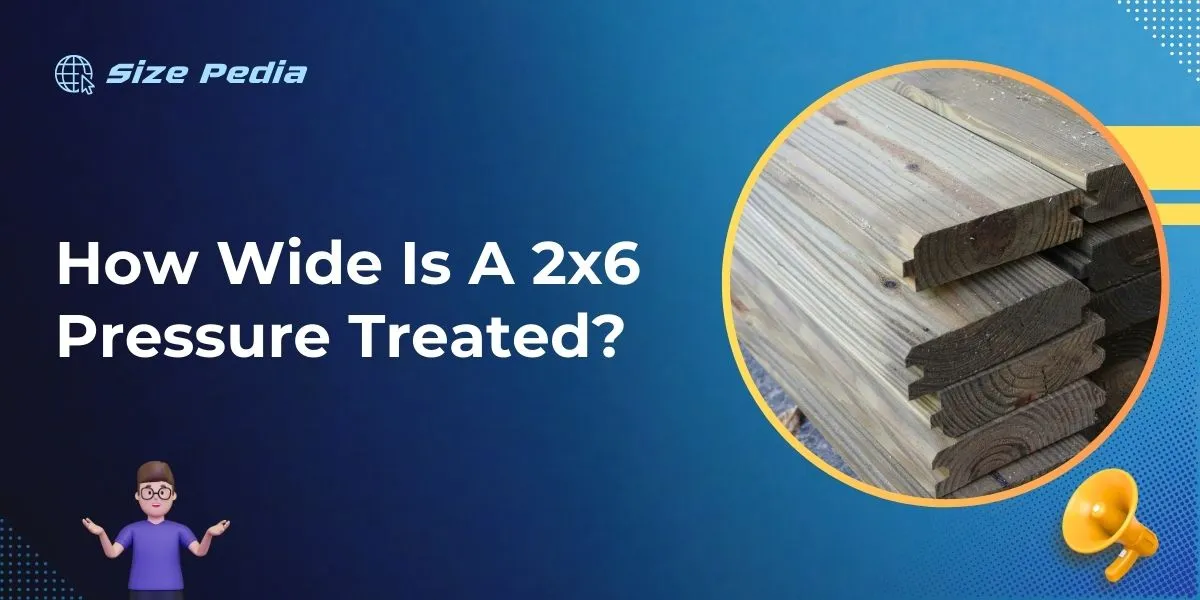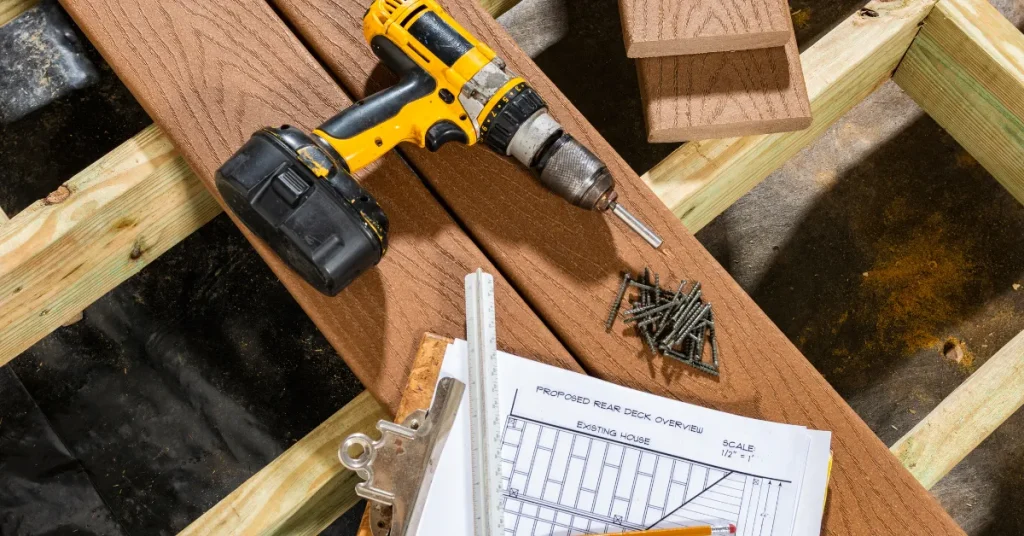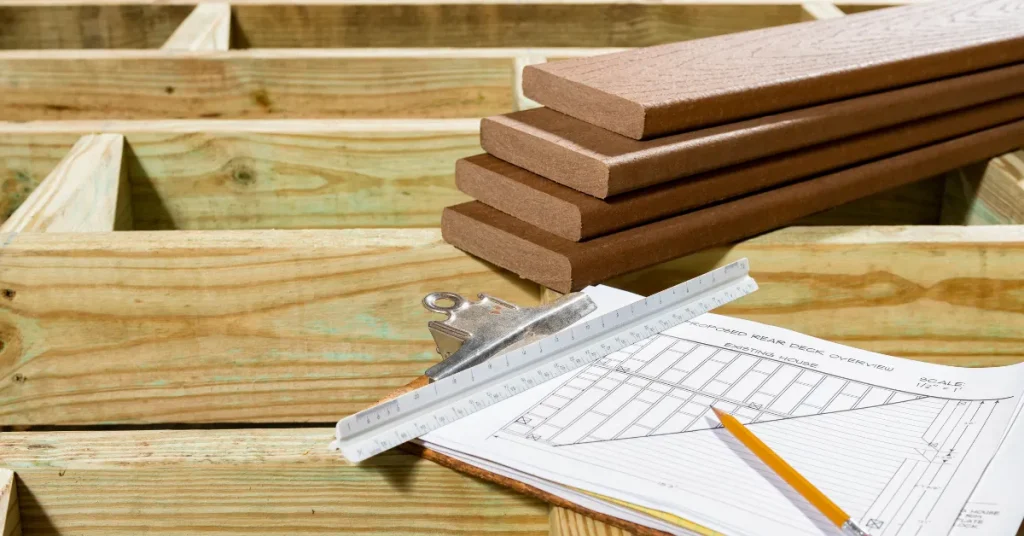A 2×6 pressure-treated board typically measures 1.5 inches thick by 5.5 inches wide. Its actual dimensions differ slightly from the nominal size.
Navigating the world of lumber for your building projects can be daunting, especially when it comes to understanding the actual versus nominal dimensions of wood.
Pressure-treated lumber, such as 2×6 boards, offers the benefit of resistance to rot and pests, making it ideal for outdoor and structural applications.
It’s essential to know that the “2×6” label is a nominal size, and the actual size will be slightly smaller due to the drying and planing process the wood undergoes.
This knowledge not only ensures you purchase the right amount of material but also helps in accurate planning and construction, to achieve strong and stable outcomes for your decks, fences, and other wooden structures.

Introduction To Pressure Treated Lumber
Pressure treated lumber is a popular choice for outdoor construction. It undergoes a process to resist decay and pests. This wood type is suitable for decks, fences, and more. Let’s explore the basics and common uses of 2×6 pressure treated lumber.
The Basics Of Pressure Treating
To create pressure treated lumber, manufacturers place wood in a pressurized tank. They remove the air and replace it with a preservative. This process protects the wood from rot, insects, and moisture.
- Enhanced durability comes from this treatment.
- It is ideal for outdoor projects because of its resilience.
- The chemicals used vary based on the wood’s intended use.
Common Uses For 2×6 Pressure Treated Lumber
A 2×6 piece of pressure treated lumber measures 1 1/2″ by 5 1/2″ in actual size. Its versatility shines in outdoor structures. Here are some typical applications:
| Project Type | Use of 2×6 Lumber |
| Decking | Joists and supports |
| Fencing | Horizontal rails |
| Garden Beds | Edging and framing |
| Landscaping | Retaining walls and steps |
Unveiling The Standard Dimensions
Understanding the true dimensions of lumber is crucial for any building project. Often, what’s on the tag is not what meets the eye. Below, we reveal what a 2×6 pressure treated board truly measures.
Nominal Vs. Actual Measurements
In the world of lumber, sizes can be deceiving. Here’s why:
- Nominal size is the label size, for simplicity.
- Actual size is the board’s true measurement, after being cut and dried.
The nominal size is larger than the actual size due to the process the wood goes through before hitting shelves.
The True Width Of A 2×6 Pressure Treated Board
The ‘2×6’ is simply a name for easy reference.
| Labeled Size (Nominal) | Actual Width | Actual Thickness |
| 2×6 | 1 1/2 inches | 5 1/2 inches |
This board’s actual width is 5 1/2 inches, not 6. Its thickness is also less, at 1 1/2 inches. Always double-check these numbers before planning your cuts and construction.
Factors Affecting Lumber Sizes

Understanding the true size of lumber like 2×6 pressure-treated wood requires a look at key factors. These factors influence the final measurements you can expect from your lumber. Let’s explore these crucial elements to help you pick the right size for your projects.
Moisture Content And Swelling
Moisture content dramatically affects lumber dimensions. Wood fibers act like sponges, swelling with moisture and shrinking when dry.
- Pressure-treated lumber starts with a high moisture level.
- It will shrink to a slightly smaller size as it dries out.
- Swelling occurs again in humid conditions.
The size mention, “2×6,” is often at the time of cutting. It does not account for changes due to moisture.
Cutting And Milling Processes
Lumber sizes also vary based on cutting and milling. These processes affect the lumber width and thickness.
- Logs are cut into rough sizes at a sawmill.
- Additional milling refines these rough cuts.
- Milling aims for uniformity but results can vary.
A nominal 2×6’s actual dimensions might be closer to 1.5 inches by 5.5 inches due to these processes.
| Nominal Size | Actual Size (Dried) |
| 2×6 | 1.5″ x 5.5″ |
Remember, these sizes can still change due to the moisture content and climate conditions.
Importance Of Accurate Measurements In Construction
The success of every construction project hinges on exact measurements. When builders use precise dimensions, the final structure stands strong and true.
For those working with materials like 2×6 pressure-treated lumber, knowing the real width and length is critical. Let’s explore how accuracy in measurements, such as the true size of a 2×6, impacts construction.
Structural Integrity And Support
Accurate measurements ensure safe buildings. They determine how well parts fit together. Mistakes invite risks to a building’s strength. For instance, a 2×6 board is actually 1.5 inches by 5.5 inches. Builders must keep this in mind. It’s key for walls and floors to bear weight correctly.
- Exact measurements prevent structural failure
- A preventable mistake can compromise the entire project
- Using 2x6s correctly ensures valuable support and durability
Planning And Estimating Materials
Knowing the real size of a 2×6 helps with accurate planning. You can estimate the right amount of materials without waste. This accuracy directly affects your budget and schedule. Proper estimates keep projects within limits.
| Labelled Size | Actual Size | Use For |
| 2×6 | 1.5″ x 5.5″ | Support beams, framing |
Plan projects with the correct lumber dimensions in mind. This ensures your structure comes together seamlessly. An accurate count means you buy what you need. This limits surplus and keeps sites eco-friendly.
- Measure twice to buy just what is needed
- Avoid surplus to save money and resources
- Plan with the earth in mind for greener building
Tips For Selecting The Best Lumber
Embarking on a project means finding top-notch lumber – a solid foundation for any masterpiece.
Whether erecting a deck with pressure-treated 2x6s or crafting a new piece of furniture, selection matters. Here’s how to score the best planks for your build.
Understanding Wood Grades And Quality
Wood grades define the lumber’s appearance and strength. Grades vary from high-quality, clear woods to those with more knots and imperfections. Always align wood grade with project needs. Here’s a simple breakdown:
- Select Grade – Almost clear, minimal imperfections.
- Number 1 Grade – Few knots, good for structures.
- Number 2 Grade – More knots, suitable for general construction.
- Number 3 Grade – Many knots, ideal for utility projects.
Select higher grades for visible spaces and supportive ones where strength is key.
Inspecting Lumber Before Purchase
Prioritize direct lumber inspection to avoid surprises later. Here’s what to look for:
- Check for straightness. Eye down the edge to spot curves or twists.
- Ensure the wood is dry. Wet lumber can warp or shrink upon drying.
- Examine for uniformity. Consistent dimensions make for easier construction.
- Watch for defects like large knots, splits, or holes.
Remember, practical vetting pays off, ensuring your project stands the test of time.
Best Practices for Pressure Treated

Understanding the dimensions and best practices for 2×6 pressure-treated lumber is crucial. It ensures longevity and optimal use in your projects. This final section will recap the specifics and guide you through storage and handling.
Recap Of 2×6 Lumber Dimensions
The term ‘2×6’ refers to the lumber’s size. Despite its name, the actual measurements of a 2×6 are not exactly two by six inches. Instead, its nominal size is different from its actual size. The pressure treating process can also change the wood’s dimensions slightly.
A standard 2×6 pressure-treated piece of lumber typically measures 1 1/2 inches thick by 5 1/2 inches wide. But these numbers can vary slightly. Always measure each piece of lumber before use to avoid surprises.
Best Practices In Handling And Storage
To ensure your 2×6 lumber stays in top shape, follow these best practices:
- Keep lumber dry – Always store it off the ground and under cover if possible.
- Allow for air circulation – Stack with spacers to let air flow around the wood.
- Avoid direct contact with soil or concrete – It may cause moisture absorption.
- Protect from sunlight before installation – It helps prevent warping and cracking.
Remember to don gloves and safety gear when handling. Treated lumber contains chemicals. Proper handling keeps you safe.
For larger projects, consider a lumber rack to keep your wood straight and organized. It saves space and maintains quality.
By following these guidelines, you ensure your 2×6 lumber’s durability and stability. Good practices extend its service life. Use the information here to make informed choices and execute projects like a pro.
FAQs About How Wide Is A 2×6 Pressure Treated
How Wide Is A Pressure Treated 2 By 6?
A pressure-treated 2 by 6 board typically measures 1. 5 inches thick by 5. 5 inches wide.
How Wide Is 2×6 Lumber?
The nominal width of 2×6 lumber is 6 inches, but its actual width typically measures 5. 5 inches.
What Is The Actual Width Of A Pressure Treated 2×8?
The actual width of a pressure treated 2×8 is approximately 7 1/4 inches. This size can vary slightly due to the treatment process and moisture content.
What Is The Actual Width Of A 2x 12?
The nominal width of a 2×12 lumber piece is 12 inches, but its actual width is typically 11 1/4 inches.
Conclusion
Understanding the dimensions of pressure-treated lumber is essential for any construction project. A 2×6 piece of wood is traditionally 1. 5 inches by 5. 5 inches.
Remember, the true size may vary slightly. Measure meticulously and select the right materials for a successful build.
Your structures will thank you for the precision.
Resources:
1. https://extension.oregonstate.edu/ask-extension/featured/raised-bed-lumber-pressure-treated-safe
